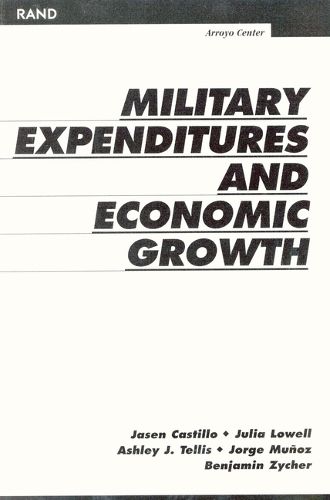Readings Newsletter
Become a Readings Member to make your shopping experience even easier.
Sign in or sign up for free!
You’re not far away from qualifying for FREE standard shipping within Australia
You’ve qualified for FREE standard shipping within Australia
The cart is loading…






This study explores the historical relationship between economic growth and military expenditures in five great power countries: Germany, France, Russia, Japan, and the United States. Using statistical and case-study methodologies, the authors examine how each country’s military expenditures responded to increases in economic output levels and in economic growth during the period 1870-1939, and they offer explanations for the relationship in each country. If historical experience holds true, economic growth in some of the present-day candidates for great-power status will spur them to increase the growth rate of their military expenditures and, as a result, their military capabilities. But each country is unique, and strong economic growth need not imply a commensurate expansion of military spending or capability. History suggests that perceived threats from abroad may be the most important factor leading potential great powers to increase military expenditures. This distinction is important, because policies designed to deter foreign military expansions motivated by ambition may have perverse effects if the expansions are in fact motivated by fear. This analysis suggests that today’s large and fast-growing economies are most likely to devote a growing share of their government and national resources to military expenditures when the external environment appears highly unstable. During such times, an increase in the size and effectiveness of these states’ armed forces can lead to a significant reconfiguration of the global balance of power.
$9.00 standard shipping within Australia
FREE standard shipping within Australia for orders over $100.00
Express & International shipping calculated at checkout
This study explores the historical relationship between economic growth and military expenditures in five great power countries: Germany, France, Russia, Japan, and the United States. Using statistical and case-study methodologies, the authors examine how each country’s military expenditures responded to increases in economic output levels and in economic growth during the period 1870-1939, and they offer explanations for the relationship in each country. If historical experience holds true, economic growth in some of the present-day candidates for great-power status will spur them to increase the growth rate of their military expenditures and, as a result, their military capabilities. But each country is unique, and strong economic growth need not imply a commensurate expansion of military spending or capability. History suggests that perceived threats from abroad may be the most important factor leading potential great powers to increase military expenditures. This distinction is important, because policies designed to deter foreign military expansions motivated by ambition may have perverse effects if the expansions are in fact motivated by fear. This analysis suggests that today’s large and fast-growing economies are most likely to devote a growing share of their government and national resources to military expenditures when the external environment appears highly unstable. During such times, an increase in the size and effectiveness of these states’ armed forces can lead to a significant reconfiguration of the global balance of power.